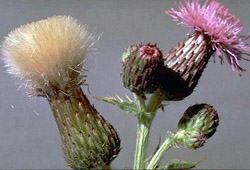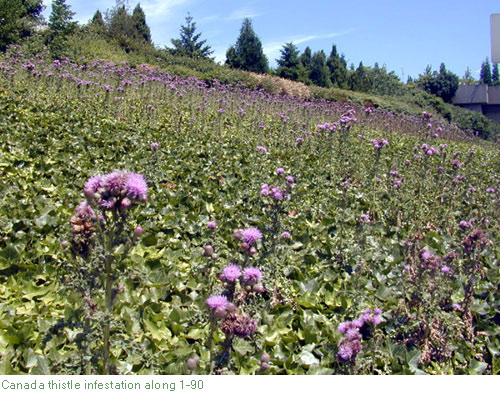Creeping thistle (Canada thistle) identification and control
Cirsium arvense

Legal status in King County, Washington
Public and private landowners are not required to control infestations of creeping thistle that occur on their property in King County. Creeping thistle is a Class C Noxious Weed in Washington, first listed in 1988. Because control is not required in the county, it is on the list of Non-Regulated Noxious Weeds for King County. For more information, see Noxious Weed Lists and Laws or visit the website of the Washington State Noxious Weed Control Board.
Additional information on creeping thistle (Canada thistle)
What to do if you find this plant in King County, Washington
Because creeping thistle is so widespread, property owners in King County are not required to control it and we are not generally tracking infestations. We can provide advice on how to control creeping thistle, but there is generally no legal requirement to do so.
Creeping thistle photos - click on thumbnail for larger image

Related information
Related agencies
Program offices are located at 201 S. Jackson St., Suite 600, Seattle, WA 98104. To contact staff, see the Noxious Weed Control Program Directory, send an email, or call 206-477-WEED (206-477-9333).

 Translate
Translate